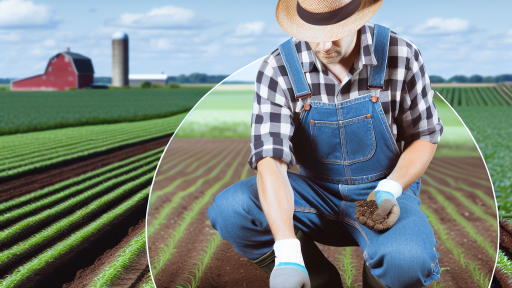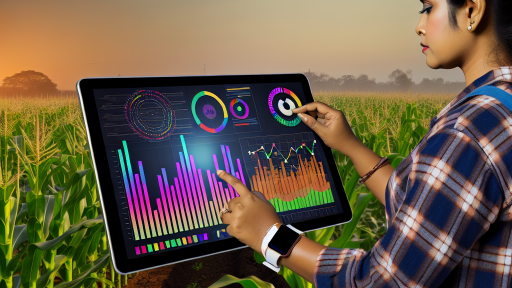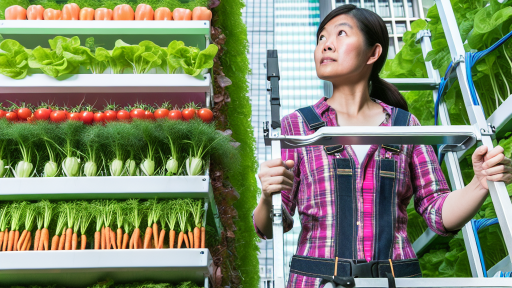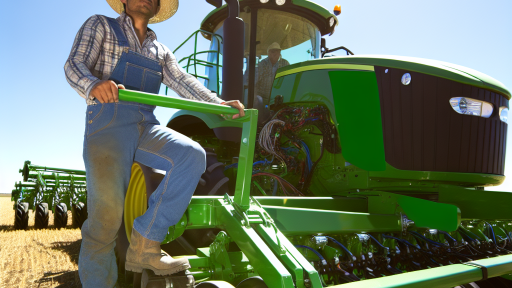Introduction to Remote Sensing Technologies and Their Importance in Organic Farming
Remote sensing technologies offer valuable insights for organic farmers.
These technologies utilize various tools to collect data from afar.
As such, they help farmers monitor crop health and soil conditions efficiently.
Understanding Remote Sensing Technologies
Remote sensing involves gathering data without direct physical contact.
Farmers can employ drones, satellites, and sensors for data collection.
Drones equipped with cameras provide aerial views of farming areas.
Satellites offer insights over larger regions, capturing extensive agricultural data.
Sensors placed in the field can track variables like moisture and temperature.
Benefits of Remote Sensing for Organic Farming
Remote sensing enhances productivity and sustainability in organic practices.
Farmers can identify crop health issues promptly, reducing losses.
Additionally, these technologies assist in precision agriculture methods.
Farmers tailor their interventions based on accurate, real-time information.
Data Utilization in Decision Making
Farmers can analyze data to make informed management decisions.
For example, they can optimize irrigation schedules based on moisture data.
Furthermore, they can assess crop performance and yield forecasts accurately.
Transform Your Agribusiness
Unlock your farm's potential with expert advice tailored to your needs. Get actionable steps that drive real results.
Get StartedThis ability to adapt ensures better resource management throughout the season.
Adoption of Remote Sensing Technologies
More organic farmers are adopting remote sensing due to its benefits.
They find that technology lowers labor costs while increasing efficiency.
Additionally, many companies offer user-friendly platforms for data analysis.
This accessibility encourages wider use in organic farming practices.
Overview of Different Remote Sensing Technologies Used in Agriculture
Introduction to Remote Sensing
Remote sensing technologies have transformed modern agriculture.
They provide crucial data for informed decision-making.
Farmers can optimize resources and boost crop yields.
Satellite Imagery
Satellite imagery is a primary tool in remote sensing.
It allows farmers to monitor large areas efficiently.
High-resolution images enable detailed crop analysis.
Farmers can assess plant health and moisture levels.
Drone Technology
Drones offer a versatile approach to remote sensing.
They capture high-resolution images and data in real-time.
This technology allows farmers to survey their fields closely.
Drones can identify pest infestations and disease outbreaks.
Thermal Imaging
Thermal imaging detects temperature variations in crops.
Farmers can identify stressed plants before visible symptoms appear.
This technology assists in precision irrigation management.
It helps farmers conserve water and improve crop health.
Soil Sensors
Soil sensors measure moisture, pH, and nutrient levels.
These sensors provide real-time data to farmers.
They inform decisions about irrigation and fertilization.
Farmers can use this data to enhance soil health.
Showcase Your Farming Business
Publish your professional farming services profile on our blog for a one-time fee of $200 and reach a dedicated audience of farmers and agribusiness owners.
Publish Your ProfileMultispectral and Hyperspectral Imaging
Multispectral imaging captures data across various wavelengths.
It reveals information that is invisible to the naked eye.
Hyperspectral imaging offers even greater detail.
Farmers can analyze crop health and species identification.
Benefits of Remote Sensing for Organic Farmers
Remote sensing technologies benefit organic farmers significantly.
They reduce reliance on chemical inputs.
Farmers can monitor biodiversity and ecosystem health.
These technologies enhance compliance with organic standards.
Additionally, they lead to better yield predictions.
Benefits of Remote Sensing for Organic Farmers
Enhancing Crop Management
Remote sensing technologies greatly enhance crop management for organic farmers.
These tools offer valuable insights into crop health and soil conditions.
Farmers can monitor their fields in real-time using satellite images.
This capability allows them to detect issues early and respond promptly.
By analyzing data, farmers can make informed decisions about resource allocation.
Moreover, remote sensing supports precision agriculture practices.
This method optimizes inputs like water, fertilizers, and pesticides.
Consequently, farmers can reduce waste and improve sustainability.
Additionally, remote sensing aids in tracking crop growth stages.
This information helps in planning harvests and managing crop rotations.
As a result, farmers can maximize their yields while maintaining soil health.
Another benefit is the ability to assess the impact of weather events.
Farmers can analyze how changes in climate affect their crops.
This analysis leads to better risk management strategies.
For instance, they can implement protective measures before storms.
Furthermore, remote sensing technologies support organic certification processes.
This support enhances transparency and trust with consumers.
Overall, these technologies empower organic farmers with critical information.
They enable smarter practices that contribute to sustainable agriculture.
You Might Also Like: Integrating Remote Sensing into Farm Management
Case Studies: Successful Implementations of Remote Sensing in Organic Farms
Innovative Approaches by Green Valley Farms
Green Valley Farms utilized satellite imagery to monitor crop health.
This technology helped them detect nutrient deficiencies early.
They implemented variable rate applications based on this data.
As a result, their yields improved significantly.
Moreover, they minimized their fertilizer usage by 30%.
This implementation reduced costs and environmental impact.
Utilizing Drone Technology at Meadow Brook Organic Farm
Meadow Brook Organic Farm adopted drone technology for pest management.
Drones provided detailed aerial images of the fields.
This allowed for precise identification of pest hotspots.
Consequently, they conducted targeted interventions.
They reduced pesticide use by 40% while maintaining crop integrity.
Showcase Your Farming Business
Publish your professional farming services profile on our blog for a one-time fee of $200 and reach a dedicated audience of farmers and agribusiness owners.
Publish Your ProfileThis method proved to be both effective and sustainable.
Yield Prediction with Remote Sensing at Harvest Time Farms
Harvest Time Farms implemented remote sensing for yield predictions.
They collected data throughout the growing season.
This enabled accurate forecasting of harvest quantities.
With this knowledge, they optimized their supply chain logistics.
Also, they improved their market pricing strategies accordingly.
Ultimately, they increased their profitability over two growing seasons.
Water Management Solutions at Oak Ridge Organics
Oak Ridge Organics focused on irrigation efficiency using remote sensing.
They monitored soil moisture levels remotely.
This approach facilitated precise irrigation scheduling.
As a result, they reduced water usage significantly.
In fact, they reported a 25% decrease in water consumption.
This not only saved costs but also preserved local water resources.
Delve into the Subject: Improving Livestock Management Through Data
Comparing Satellite Imagery vs. UAVs (Drones) for Organic Farming Practices
Introduction to Remote Sensing
Remote sensing technologies have revolutionized agriculture.
These technologies provide valuable data for organic farmers.
They enhance decision-making and crop management.
Understanding Satellite Imagery
Satellite imagery captures large areas in high detail.
It allows for the monitoring of soil health and crop conditions.
Farmers can assess the growth patterns across vast farmlands.
This method is particularly useful for large-scale operations.
Additionally, satellite data can cover remote areas easily.
Advantages of Using Satellite Imagery
- Wide area coverage with comprehensive data collection.
- Access to historical data for trend analysis.
- Regular updates provided through various satellite systems.
These advantages help in strategic planning for organic cultivation.
Limitations of Satellite Imagery
- Lower resolution compared to UAV images.
- Data can be affected by cloud cover.
- Access can be cost-prohibitive for some farmers.
These limitations may hinder timely decision-making in farming.
Exploring UAVs (Drones) in Agriculture
Drones have become popular tools among organic farmers.
They offer flexibility and precision in data collection.
Farmers can quickly survey specific fields with UAVs.
Benefits of UAVs for Organic Farming
- High-resolution images for detailed analysis.
- Rapid assessment of crop health and moisture levels.
- Ability to collect data in real-time.
Consequently, UAVs facilitate immediate interventions as needed.
Challenges of Using UAVs in Agriculture
- Limited flight time due to battery life.
- Need for skilled operators and training.
- Regulatory restrictions in some areas.
These challenges can slow down adoption among farmers.
Choosing the Right Technology
Farmers must weigh their specific needs when selecting technology.
Considerations include farm size, budget, and data requirements.
Both satellite imagery and UAVs have unique advantages.
Complementary Use of Technologies
Organic farmers can benefit from both technologies.
Combining satellite imagery and UAV data provides a comprehensive view.
This approach enhances overall farm management strategies.
Future Trends in Remote Sensing for Organic Agriculture
The future holds exciting possibilities for remote sensing.
Advancements in technology will likely improve accessibility.
New tools will enhance precision farming techniques.
As a result, organic farmers can utilize these technologies effectively.
Delve into the Subject: How Automated Machinery Enhances Crop Production
Showcase Your Farming Business
Publish your professional farming services profile on our blog for a one-time fee of $200 and reach a dedicated audience of farmers and agribusiness owners.
Publish Your ProfileTools and Software for Analyzing Remote Sensing Data in Organic Agriculture
Introduction to Remote Sensing in Agriculture
Remote sensing provides valuable insights for organic farmers.
It allows farmers to monitor their fields effectively.
Additionally, this technology helps in resource management.
Types of Remote Sensing Technologies
Various technologies enhance the understanding of agricultural landscapes.
Satellite imagery is among the most used tools.
Drones offer precision mapping capabilities.
Moreover, ground-based sensors contribute valuable real-time data.
Software Options for Data Analysis
Numerous software tools facilitate remote sensing data analysis.
GIS software allows for spatial data manipulation.
Popular options include QGIS and ArcGIS.
These tools help analyze and visualize agricultural trends.
Focus on User-Friendly Interfaces
User-friendly interfaces improve accessibility for farmers.
Software like Cropio simplifies complex data analysis.
Moreover, tools with mobile applications allow field access and updates.
Interpreting Remote Sensing Data
Data interpretation is crucial for effective decision-making.
Farmers can identify crop health through NDVI indices.
Additionally, land use changes can be tracked over time.
These insights lead to timely interventions and adjustments.
Integration with Other Technologies
Combining remote sensing with other technologies enhances effectiveness.
For instance, integrating GPS technology improves precision farming.
Furthermore, data from IoT devices can complement remote sensing insights.
Case Studies and Practical Applications
Case studies highlight the practical benefits of these technologies.
For example, a farm in California reduced water usage significantly.
This success came from precise monitoring via drones.
Similarly, a vineyard in France improved yield through timely interventions.
Future Trends in Remote Sensing for Organic Farmers
The future of remote sensing in agriculture looks promising.
Emerging technologies will enhance data accuracy and efficiency.
Additionally, machine learning algorithms will aid in predictive analytics.
These advancements will support sustainable practices in organic farming.
Delve into the Subject: Smart Vertical Farming Technologies for Agriculture
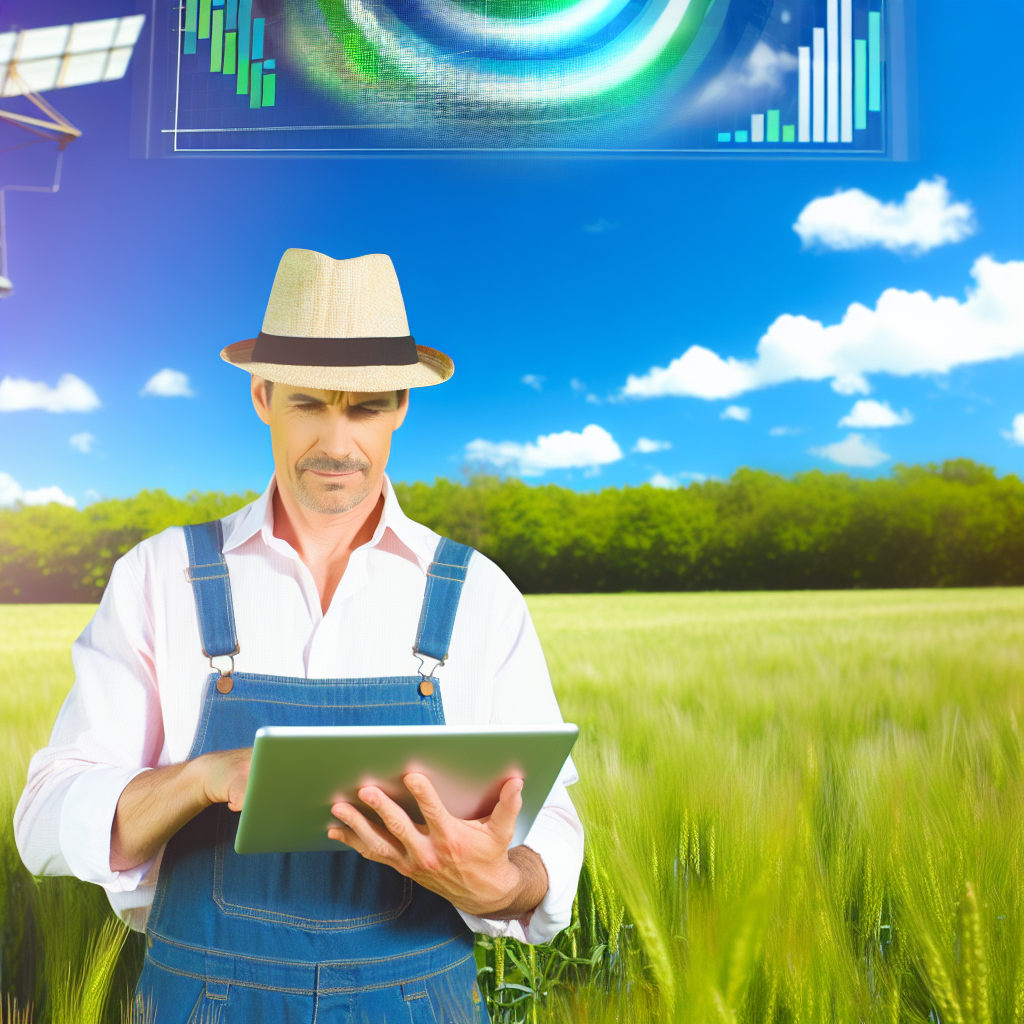
Integrating Remote Sensing with Other Precision Agriculture Techniques
Overview of Remote Sensing
Remote sensing offers valuable insights for organic farmers.
This technique uses satellite or aerial imagery to collect data.
Farmers can monitor crop health and growth patterns efficiently.
Complementary Precision Agriculture Techniques
Farmers can enhance their practices by combining techniques.
Geographic Information Systems (GIS) provide spatial analysis tools.
Soil moisture sensors offer real-time data for irrigation needs.
Thus, integrating these technologies optimizes resource management.
Data Analysis and Decision-Making
Data integration plays a crucial role in modern farming.
Remote sensing data combined with GIS helps in mapping.
This approach enables targeted application of fertilizers and pesticides.
Showcase Your Farming Business
Publish your professional farming services profile on our blog for a one-time fee of $200 and reach a dedicated audience of farmers and agribusiness owners.
Publish Your ProfileConsequently, farmers can boost yields while minimizing waste.
Case Studies and Success Stories
Numerous farmers have benefited from integrated technologies.
For instance, Clara Farms increased crop yields by 30%.
They utilized appropriate sensors alongside remote imagery.
Implementation Challenges
Adopting new technologies poses challenges for many farmers.
High initial costs can deter some organic growers.
Additionally, the learning curve for using these technologies is steep.
Support and training can alleviate these difficulties.
Future Potential of Integrating Technologies
The future of agriculture lies in technological integration.
Innovations will continue to emerge, enhancing efficiency.
Farmers who adapt will gain a competitive advantage.
Ultimately, integrating remote sensing with other techniques fosters sustainable agriculture.
Challenges and Limitations of Using Remote Sensing in Organic Farming
Cost and Accessibility
Implementing remote sensing technology can be expensive for some organic farmers.
High initial costs may deter smaller operators from adopting this technology.
Additionally, access to the required equipment may vary by region.
Many farmers also require training to effectively use remote sensing tools.
Data Interpretation Challenges
Understanding the data generated from remote sensing can be complex.
Farmers must often rely on specialists for accurate data interpretation.
Inexperience with technology may result in misinterpretations and poor decision-making.
Technological Limitations
Remote sensing technologies are not always compatible with organic farming practices.
Certain sensors may struggle to detect specific crop conditions accurately.
Cloud cover and weather conditions can hinder data quality as well.
Furthermore, resolution limitations can lead to critical oversights.
Regulatory and Certification Issues
Some organic certification organizations have strict guidelines regarding technology use.
The integration of remote sensing may conflict with these regulations.
Farmers must remain informed about compliance to maintain their certification.
Dependence on Technology
Relying too heavily on technology can limit intuitive farming skills.
Farmers may become overly dependent on remote sensing data.
This may result in neglecting traditional farming practices that are also effective.
Future Trends in Remote Sensing Technologies for Sustainable Organic Farming
Advancements in Satellite Technology
Satellite technology continues to evolve at a rapid pace.
New satellites provide higher resolution images of agricultural fields.
These images enhance crop monitoring and management capabilities.
Additionally, companies like AeroFarms and PlanetLabs lead innovations in this area.
Integration of AI and Machine Learning
Artificial intelligence significantly impacts remote sensing applications.
Machine learning algorithms can analyze vast amounts of data efficiently.
Farmers can use these insights to make informed decisions.
Moreover, predictive analytics models help forecast yield and identify threats.
Deployment of Drones
Drones are becoming increasingly popular among organic farmers.
They allow for real-time, precise monitoring of crops and soil health.
Farmers can use drones for targeted pesticide and nutrient applications.
Showcase Your Farming Business
Publish your professional farming services profile on our blog for a one-time fee of $200 and reach a dedicated audience of farmers and agribusiness owners.
Publish Your ProfileThis technology reduces waste and improves sustainability.
Use of Internet of Things (IoT) Devices
The Internet of Things transforms data collection in agriculture.
IoT devices can monitor environmental conditions in real-time.
These devices help track moisture levels, temperature, and crop health.
Farmers can then adjust their practices accordingly.
Emerging Remote Sensing Platforms
Various new remote sensing platforms are making waves in agriculture.
Hyperspectral imaging technology allows for detailed analysis of crops.
Farmers benefit from insights on plant health and nutrient deficiencies.
Furthermore, these platforms facilitate early detection of pests and diseases.
Collaboration and Data Sharing Initiatives
Collaboration among farmers, researchers, and tech companies is essential.
Data sharing initiatives enhance knowledge and technology dissemination.
Farmers can access valuable data to improve practices and outputs.
Such collaborations also promote innovative solutions tailored to organic farming.
Additional Resources
Adoption of drone, sensor, and robotic technologies in organic …

